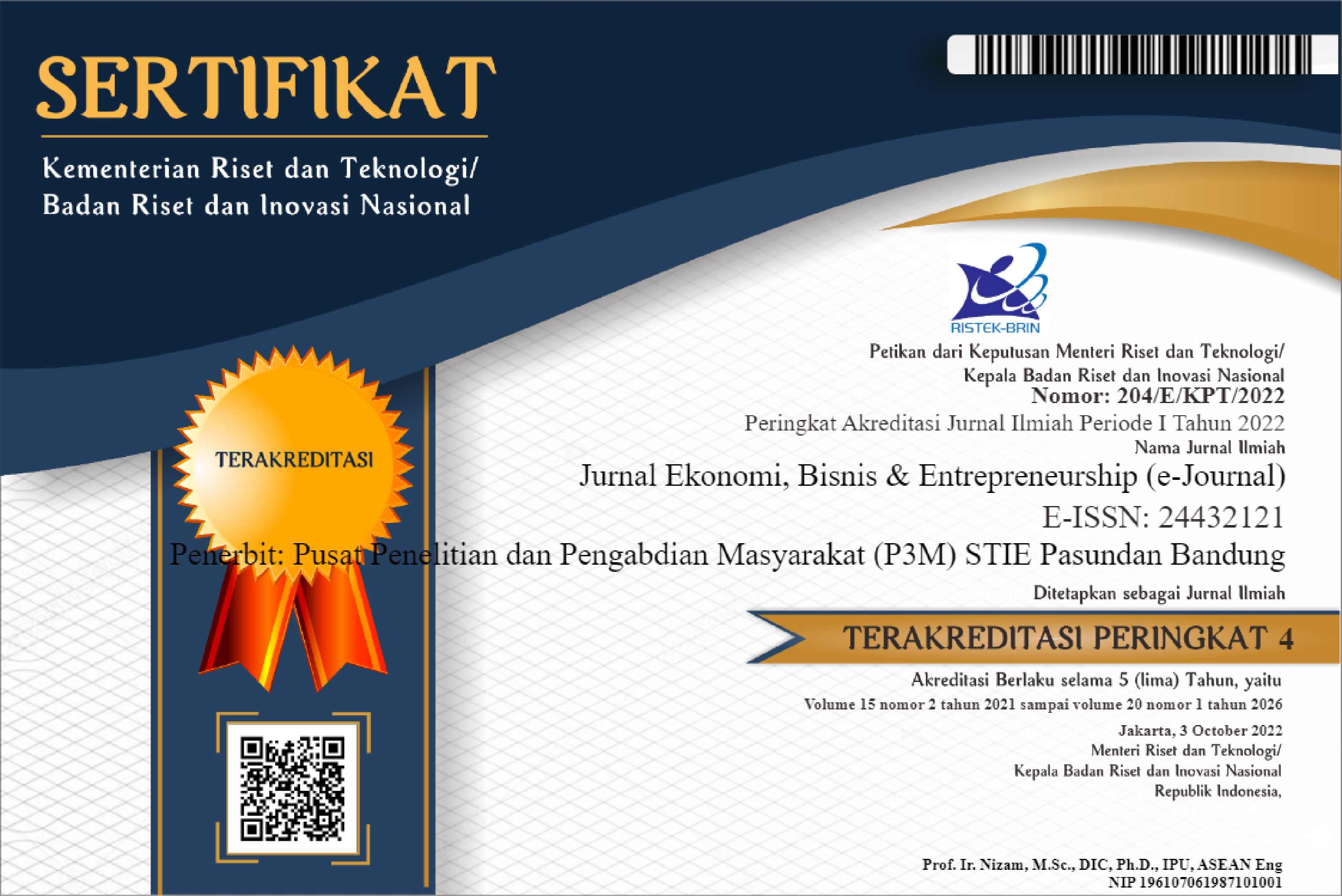JOURNAL TEMPLATE
RECOMMENDED TOOLS

![]()
![]()


Download Sertifikat JEBE
The format of the script is as follows:
Download Template Article
New Edition From Vol 18 No 2, 2024 Can Access on new Website : Here
TITLE
The title should describe the contents of the article in full, a maximum of 14 words in English.
AUTHOR
The author's name is accompanied by the origin of the institution but is not accompanied by a degree. Authors are required to include authors' biographies written on a separate sheet, consisting of: affiliation and E-mail .
ABSTRACT
Abstracts are written in English and Indonesian. The abstract contains a summary summary of the overall essence of the study in a concise and concise manner. Abstract contains background, objectives, methods, results, and conclusions. Abstracts are typed single spaces.
Keywords should reflect concepts or research variables contained, consisting of 5-6 words.
INTRODUCTION
The introduction explains the main points discussed as the research / problem background, which contains the research issues, research objectives, and a summary of relevant theoretical studies. The preliminary presentation in the article does not include the title. Contains a variety of theories relevant to the research variables that contain the indicators used to measure, as well as the description of the relationships among the variables.
RESEARCH METHODS
Methods include research design, population and sample, development of research instruments, data collection techniques, and data analysis techniques, described briefly.
RESULT AND DISCUSSION
The results present the results of the final data analysis instead of unprocessed raw data.
Discussion is an explicit affirmation of the interpretation of the results of data analysis, linking findings to previous theories or research, and the implications of the findings are linked to current circumstances.
The description exposure can be accompanied by images, photos, tables, and graphs all of which include the title, and the reference source if necessary.
CONCLUSION
In closing, write the statement paragraph style narrative—author Stating the research findings' conclusions limiting research and future research.
REFERENCES
APA 6th style with alphabetical order. Authors can find out more about citing APA Style on https://apastyle.apa.org/6th-edition-resources/basics-tutorial. Authors can use reference manager applications such as Mendeley or Google Scholar Citations Tool
Reference sourced from publications published within the last ten years and 80 % were referred from primary reference.
Example:
Books:
Sekaran, U., & Bougie, R. (2010). Research methods for business: A skill building approach (5ed.). United Kingdom: John Wiley & Sons.
Journal:
Alarcon, G. M. (2011). A meta-analysis of burnout with job demands, resources, and attitudes. Journal of vocational behavior, 79(2), 549-562.
Tannenbaum, S. I., & Cerasoli, C. P. (2013). Do team and individual debriefs enhance performance? A meta-analysis. Human factors, 55(1), 231-245.
Proceeding:
Chandler, G, N., (2008). Organizational learning and new venture performance. Proceedings, USASBE, 0240-0255.
LIST OF APPENDICES (IF ANY)
Acknowledgments addressed to them (individuals, organizations, and institutions) that have helped carry out research and writing. (if available)
Indexing by:
ISSN online: 2443-2121

This work is licensed under a Creative Commons Attribution-NonCommercial-ShareAlike 4.0 International License.